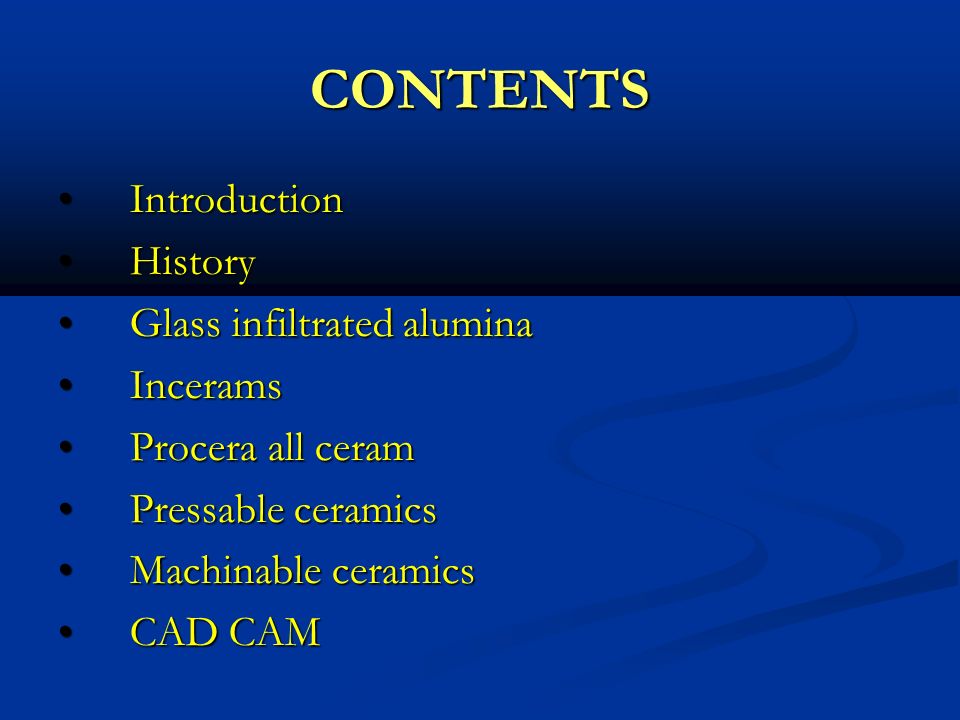Introduction ceramic is defined as product made from non metallic material by firing at a high temperature.
Machinable ceramics in dentistry.
The term dental ceramics comprises a wide variety of materials that reaches from filled glasses to nearly dense sintered ceramics from products that are shaped from powders and melts to components milled from blanks before or after sintering.
The processing of ceramics is divided into four parts that describe the basic steps.
Tanja lube robert danzer in advanced ceramics for dentistry 2014.
1 6 the benefit of a pre manufactured block is that there is no residual.
A general overview of ceramic processes is presented with the focus on processes relevant to advanced ceramics in dentistry.
Ceramic refers to any material composed of the arrays of metallic oxygen bonds described previously.
Their properties vary over a wide range.
Nents by direct ceramic machining.
Powder treatment shaping of ceramic green bodies drying and binder removal and sintering.
Srinivasa raju datla 1 rama krishna alla 2 venkata ramaraju alluri 1 jithendra babu p 1 anusha konakanchi 3.
Machining of aesthetic glass based ceramics is relatively straightforward and special formulations were quickly developed that were much higher quality than what was available from dental laboratory processing based on either strengthened and fine grained feldspathic ceramics mark ii vita or the first glass ceramic introduced for dental.
The demand for esthetics in dentistry is increasing day by day.
Porcelain on the other hand is a type of ceramic that results when feldspar k 2 o al 2 o 3 sio 2 silica sio 2 and alumina al 2 o 3 are fired together with fluxes such as sodium carbonate na 2 co 3 or.
2 department of dental materials vishnu dental college bhimavaram west godavari andhra pradesh india.
Ceramics have been introduced to.
Dental porcelain also known as dental ceramic is a dental material used by dental technicians to create biocompatible lifelike dental restorations such as crowns bridges and veneers evidence suggests they are an effective material as they are biocompatible aesthetic insoluble and have a hardness of 7 on the mohs scale.
Ed machinable ceramic fabrication by allow ing scanning designing and milling of either.
Part ii recent advances in dental ceramics.
The terms ceramic and porcelain are often used interchangeably but incorrectly.
For certain dental prostheses such as three unit molars porcelain.

